History of Lutsk
Lutsk in the 11th-15th centuries
The exact year of the foundation of Lutsk is unknown. As an already fortified town, it was first mentioned in the Hypatian Codex of 1085, in the context of internecine strife between the descendants of Yaroslav the Wise (978-1054), the Grand Prince of Kiev. Researchers of the history of the city assume that it arose around the year 1000. Its first residents were representatives of the East Slavic tribes of the Dulebs and the Volhynians.
From the 11th to the middle of the 12th centuries, Lutsk was part of the Volhynia Principality, a western Kievan Rus’ principality. In 1157, Lutsk became the center of a separate Lutsk Principality (1157-1393) formed during the period of feudal fragmentation in Rus’. In 1323, the Principality of Lutsk was captured by Gediminas, Grand Duke of Lithuania. The Lutsk Principality was abolished by the Grand Duchy of Lithuania in 1393.
At the beginning of the 15th century, there were up to 15 Orthodox churches in Lutsk. During the Lithuanian-Polish times, some of them were destroyed, others were converted into Uniate churches, and then into Catholic churches.
Lutsk was an important economic and cultural center. In 1429, it hosted a diplomatic gathering known as the Congress of European Monarchs or the Congress of Lutsk. Its purpose was to resolve the political and economic issues of the countries of Central and Eastern Europe. It was attended by Vytautas (Grand Duke of Lithuania), Jogaila (King of Poland), Sigismund of Luxemburg (future Holy Roman Emperor), Vasily II (Grand Duke of Moscow), etc. In 1432, Lutsk received Magdeburg rights (town privileges regulating the level of its autonomy).
More Historical Facts…
Lutsk in the 16th-19th centuries
In 1569, as a result of the Union of Lublin, which created the Polish-Lithuanian Commonwealth, Volhynia passed under the rule of Poland, and Lutsk became the capital of the newly formed Volhynian Voivodeship.
Starting from the end of the 16th century, the Lutsk castle (also known as Lubart’s Castle) began to lose its military significance, but the town remained the secular and spiritual capital of the region. Active trade relations to a certain extent determined the multinational composition of its population. In addition to Ukrainians, Lithuanians, Poles, Armenians, Tatars, Jews, and Crimean Karaites lived here.
In 1795, as a result of the Third Partition of Poland, Volhynia became part of the Russian Empire. Lutsk became a district town of the Volhynian Governorate with the capital in Zhytomyr. In 1832, a gymnasium was opened. In 1858, the population of Lutsk was about 6,300 people. The famous Ukrainian poetess Lesya Ukrainka (1871-1913) spent several years of her childhood here.
In the 1890s, after the construction of the South-Western Railway, the economic growth of Lutsk began. According to the 1897 census, 15,804 people lived in Lutsk (about 9,000 Jews, 3,000 Russians, 1,500 Ukrainians, 1,200 Poles, 400 Tatars).
Lutsk before the Second World War
During the First World War, Volhynia became the territory of fierce battles. In the summer of 1916, the famous Brusilov offensive (also known as “Brusilov’s breakthrough” and the “June advance”) took place in the vicinity of Lutsk. It was the greatest feat of arms of the Russian Empire during World War I and one of the most lethal offensives in world history.
After the February Revolution of 1917 in the Russian Empire, the blue and yellow Ukrainian flag was raised over Lutsk for the first time. In May 1919, Polish troops entered Lutsk. According to the Peace of Riga of 1921, which ended the Polish-Soviet War, western Volhynia became part of Poland. Lutsk again became the capital of the Volhynian Voivodeship.
After the formation of the voivodeship, the town was rebuilt. Buildings constructed mainly in the style of constructivism, popular at that time, still largely determine the architectural appearance of Lutsk. New banks, numerous trading companies, a theater, movie theaters, schools and gymnasiums, a medical institution, a stadium, and an airfield were opened in the town. In 1928, Lutsk was connected with Lviv by railway.
From 1921 to 1939, the population of Lutsk increased from 30 to 40 thousand people. According to the Polish census of 1931, Jews made up almost half of the population of Lutsk. In the second half of the 1930s, a tank factory operated in Lutsk, where Polish light tanks 7TP (7-tonne Polish) were assembled from finished parts.
In 1928-1938, the post of the Volhynian voivode was held by Henryk Jozewski, a well-known statesman of Poland and a former vice minister of internal affairs in the government of the Ukrainian People’s Republic, who had many merits in the economic development of the region and maintaining friendly relations between Ukrainians and Poles.
On September 17, 1939, during the Second World War, in accordance with the secret protocol of the Molotov-Ribbentrop Pact, the Red Army invaded the eastern part of Poland. Lutsk was occupied and became part of Soviet Ukraine. On November 27, 1939, it became the administrative center of Volyn Oblast, which was created from the western part of the former Volhynian Voivodeship.
Lutsk during and after the Second World War
On June 25, 1941, Lutsk was occupied by German troops. The Lutsk Ghetto was organized with a population of about 20 thousand people. On August 19, 1942, about 17 thousand Jews were taken to a forest on the outskirts of Lutsk and shot. On February 2, 1944, the Red Army regained control of the city. After the war, almost all Poles from the border areas were deported to Poland, Catholic churches were turned into warehouses or destroyed.
In the post-war period, Lutsk was restored. In the 1950s, a machine-building plant was opened. Later it became an automobile plant. In 1959, the population of Lutsk was 55,663 people. The city developed especially rapidly in the 1960s and 1970s. At the same time, the construction of large industrial enterprises began, which led to a rapid population growth.
The workshops left over from the Polish tank factory became the basis for the aircraft plant “Motor” . The LuAZ automobile plant produced a light car 969M “Volynyanka”. In the 1970s, Lutsk received the status of one of the “greenest” cities in the USSR. In 1989, its population was 197,724 people.
After Ukraine gained independence in 1991, Lutsk, one of the largest cities in the western part of the country, retained its leading position in the economic, cultural and religious life of Volhynia. The border location of Volyn Oblast makes Lutsk an important center of international trade.
The city gradually got rid of the symbols of the Soviet past: communist street names, monuments to Soviet leaders. Today, Lutsk is developing as a cultural and tourist center, a venue for festivals and exhibitions of Ukrainian art.
Lutsk views
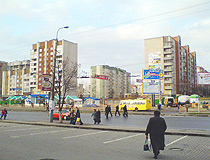
Apartment buildings in Lutsk
Author: P.Skopyuk
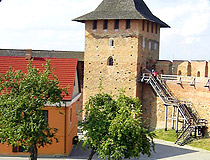
Medieval castle in Lutsk
Author: Artem Kalinichenko
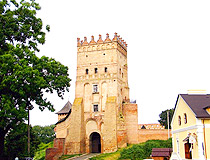
Lubart Castle in Lutsk
Author: Sergey Zozula
Lutsk - Features
Lutsk, located about 400 km west of Kyiv and 150 km northeast of Lviv, is one of the oldest cities in Ukraine. Its history goes back almost 1,000 years. Today, there is no operating airport in the city, so you can reach it only by road or train. It will take you about 7-8 hours to get from Kyiv to Lutsk by train, 5-7 hours by bus, and 5-6 hours by car. The City Day of Lutsk is celebrated on the second weekend of September.
The origin of the name “Lutsk” is usually associated with its location on the bend (“luka”) of the Styr River. According to another version, the name comes from the name of “Luka”. That was the name of the leader of the East Slavic tribe of the Dulebs, who allegedly founded a settlement on an island formed by the Styr River and its branches. Today, the territory of this island is part of the State Historical and Cultural Reserve “Old Lutsk”. In the 11th-14th centuries, Lutsk was called “Lutichesk”, “Luchesk” or “Luceoria”. After the town came under the control of the Grand Duchy of Lithuania, the name of Lutsk acquired its current form.
The coat of arms of Lutsk depicts St. Nicholas the Wonderworker in full episcopal vestments, holding a staff in one hand and a Gospel in the other. In general, it is very similar to the first known coat of arms of Lutsk, when it was part of the Volhynian Voivodeship of the Polish-Lithuanian Commonwealth. The coat of arms of Lutsk was described by the Polish heraldist Bartosz Paprocki in 1578 - “St. Nicholas with a staff and a book in his hands.” In the 16th-17th centuries, this coat of arms was depicted on the seal of the Lutsk magistrate.
The climate of Lutsk is temperate continental, with mild winters and warm summers. The coldest month is January with an average temperature of minus 4.9 degrees Celsius, the warmest month is July (plus 18.0 degrees Celsius). The leading branch of the local economy is mechanical engineering and metalworking. Lutsk also has enterprises in the chemical, construction, light, woodworking, and food industries.
The tourist services in Lutsk are not as highly developed as in the neighboring Lviv or Ivano-Frankivsk regions. Nevertheless, the sights of Lutsk attract a lot of visitors all year round. Memorabilia in Lutsk can be bought in souvenir shops: in Lubart’s Castle and on Lesya Ukrainka Street, the main pedestrian street of Lutsk. Fairs are organized here in summer, where you can not only buy souvenirs, but also enjoy sweets and pastries.
The banknote of 200 Ukrainian hryvnias depicts a portrait of the famous Ukrainian poetess Lesya Ukrainka, who spent several years of her childhood in Lutsk, as well as the Entrance Tower of the Lutsk Castle.
Main Attractions of Lutsk
Lutsk Castle (also known as Lubart’s Castle and Upper Castle) - one of two (partially) preserved Lutsk castles, an architectural and historical monument of national importance and the oldest building in Lutsk. It is one of the largest, oldest and best preserved castles in Ukraine; the main object of the historical and cultural reserve “Old Lutsk”.
The construction of the Lutsk Castle began during the reign of Grand Prince of Volhynia Liubartas (Lubart) in the 1350s. It was mostly completed by 1430. Today, several museums are open in Lubart’s Castle, including the Museum of Bells (the only museum of bells in Ukraine with more than 90 bells of the 17th-20th centuries), the Museum of Books (various books of the 17th-20th centuries, old printing machines), the Art Museum (works of art of the 17th-20th centuries, an exposition of old Ukrainian portraits). Kafedralna Street, 1A.
In the immediate vicinity to the east of the castle you can find the Central Park of Culture and Rest named after Lesya Ukrainka and the Lutsk Zoo.
Catholic Cathedral of the Holy Apostles Peter and Paul (1616-1640) - an architectural monument of national importance in the Baroque style, one of the most beautiful buildings of the city located opposite the Lutsk Castle. It was originally part of a monastery founded by Jesuit monks. There are four dungeons under the cathedral, two of which are open to the public. In the dungeons you can see an old chapel, wall paintings, tombs, and a well. Kafedralna Street, 6.
Cathedral of the Holy Trinity (1752-1755) - one of the central and largest places of worship in Lutsk, an architectural monument of national importance in the late Baroque style, originally built as a Roman Catholic church. In the second half of the 19th century, it was transferred to the Orthodox community of Lutsk. Its golden domes can be seen from many remote places in Lutsk, and the ringing of its nine bells can be heard almost everywhere in the city. Hradnyi Descent, 1.
“House of the Gospel” (“Lutheran Church”) (1906-1907). In the past, this slender neo-Gothic brick building was the main church for the Lutheran community of Lutsk. At the turn of the 19th-20th centuries, a significant number of German colonists lived in Volhynia. After Ukraine gained independence, it was transferred to the Baptist community of the city. The silhouette of this architectural monument occupies an important compositional and aesthetic place in the cityscape of Lutsk. Karaimska Street, 16.
Lesya Ukrainka Street - the main pedestrian street of Lutsk, 730 meters long. It is the center of local commerce with a lot of restaurants, shops and architectural monuments. In the building #24a there is a contemporary art gallery.
House of the Sculptor Mykola Golovan (informally “Lutsk House with Chimeras”) - the most unusual and picturesque residential building in Lutsk standing on the bank of the Styr River, an architectural monument of the modern history of the city.
This house is richly decorated with about 500 sculptures and bas-reliefs, made in different styles, from antiquity to baroque, which gives the impression of complete eclecticism. Sculptures are located around the house, on its facades and roof (animals, mythological creatures, Christian saints, and even members of the Golovan family). Liuteranska Street, 9.
Volyn Regional Historical Museum - the oldest and largest museum in Lutsk located in the very heart of Lutsk, near the park named after Lesya Ukrainka. Here you can see the archaeological, numismatic and ethnographic collections; manuscripts and personal belongings of famous residents of Lutsk; a collection of old books of the 16th-18th centuries, etc. Shopena Street, 20.
Museum of Volyn Icons. This unique museum is dedicated to the original Volyn style of icon painting. Its collection includes more than 1.5 thousand monuments of sacred art including more than 600 icons of the 16th-19th centuries, as well as icon frames, church utensils, decorative carvings, and sculptures. A separate exhibition consists of icons of the late 18th - early 20th centuries confiscated at Volyn customs during an attempt to illegally export them abroad. One of the main exhibits is the Kholmskaya Miraculous Icon of the Mother of God, a unique example of Byzantine art of the 11th-12th centuries. Yaroshchuk Street, 5.
Korsaks’ Museum of Contemporary Ukrainian Art - one of the best art galleries in Lutsk with more than 800 art objects created by contemporary Ukrainian artists. The museum regularly hosts exhibitions, there are two movie halls, a library of art literature, an art cafe, and a shop with reproductions and souvenirs. Karbysheva Street, 1.
Museum of Ukrainian Troops and Military Equipment - the only military museum in Western Ukraine, a branch of the National Military History Museum of Ukraine. Dozens of examples of military equipment and weapons are exhibited here: aviation systems, armored vehicles, anti-aircraft missile systems, artillery weapons, equipment of logistics support services, and equipment of the signal troops. Na Taboryshchi Street, 4.
Lutsk Beehive Apartment Building (1968-1980) - one of the longest residential buildings in the world and the longest in Europe located at the intersection of Sobornosti Avenue and Molodi Avenue. It consists of 38 buildings 5-9 floors high connected to each other at an angle of 120 degrees and resembling a honeycomb from above. Locals also call it the “Great Wall of China.” The length of the longest continuous part is 1,750 meters, and taking into account the branches - 2,775 meters. In total, about 10,000 people live here.
Museum of the History of Agriculture of Volyn - an open-air ethnographic museum located in the village of Rokyni, about 12 km northwest of Lutsk. This museum looks like a street of a small Volyn village of the 19th century. There are permanent workers here who spend the night in houses, heat stoves, bake bread, take care of livestock, cultivate crops, mow hay, and treat guests to dishes of Ukrainian cuisine. You can try to work with old agricultural tools, ride horses, swim in the pond, and spend the night on fragrant hay. Various holidays, fairs and conferences are held here.


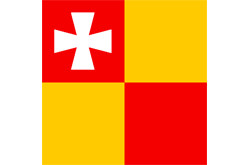
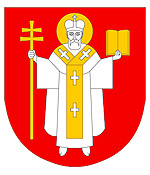



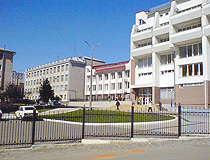
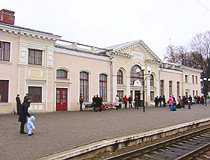
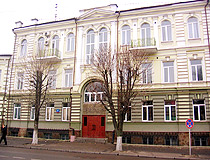
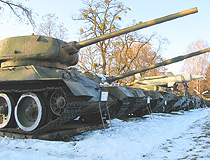
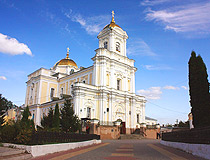
The comments of our visitors